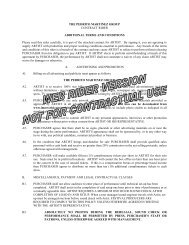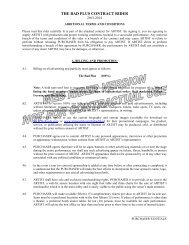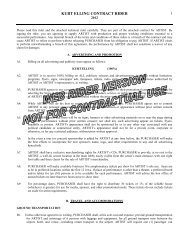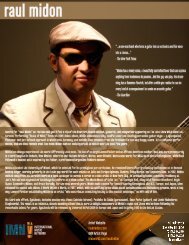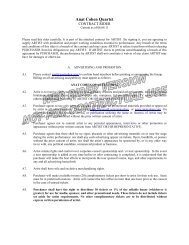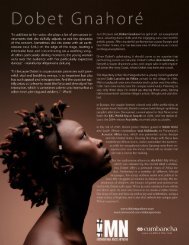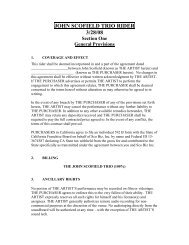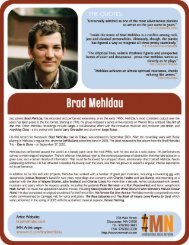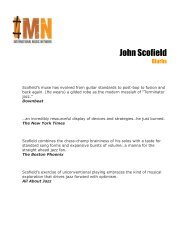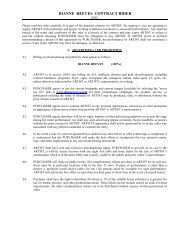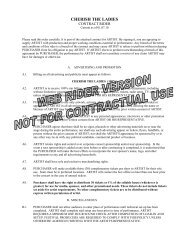McCoy Tyner Trio feat. Bill Frisell & Gary Bartz - International Music ...
McCoy Tyner Trio feat. Bill Frisell & Gary Bartz - International Music ...
McCoy Tyner Trio feat. Bill Frisell & Gary Bartz - International Music ...
- No tags were found...
You also want an ePaper? Increase the reach of your titles
YUMPU automatically turns print PDFs into web optimized ePapers that Google loves.
MCCOY TYNERBiography2008-2009It is not an overstatement to say that modern jazz hasbeen shaped by the music of <strong>McCoy</strong> <strong>Tyner</strong>. His bluesbasedpiano style, replete with sophisticated chordsand an explosively percussive left hand hastranscended conventional styles to become one of themost identifiable sounds in improvised music. Hisharmonic contributions and dramatic rhythmic devicesform the vocabulary of a majority of jazz pianists.Born in 1938 in Philadelphia, he became a part of thefertile jazz and R&B scene of the early ‘50s. His parentsimbued him with a love for music from an early age.His mother encouraged him to explore his musicalinterests through formal training. The young pianist fellunder the spell of blues and bebop at an early ageleading jam sessions in his mother’s beauty shop andwinning talent shows. <strong>McCoy</strong>’s decision to study piano was reinforced when he encounteredthe legendary bebop pianist Bud Powell, who was a neighbor of the family's. Another majorinfluence on <strong>Tyner</strong>'s playing was Thelonious Monk, whose percussive attacks would inform<strong>Tyner</strong>'s signature style. As a teenager in the 50s, <strong>Tyner</strong> often found opportunities to learndirectly from other notable Philly-based musicians. He played with numerous natives of thethriving hometown jazz scene, including trumpeter Lee Morgan and the Heath Brothers,and even led his own septet.At 17 he began a career-changing relationship with Miles Davis’ sideman saxophonist JohnColtrane. While <strong>Tyner</strong> patiently waited for Coltrane to leave Miles' group and start his ownband, another saxophonist, Benny Golson invited <strong>Tyner</strong> to join him and trumpeter ArtFarmer in forming a New York-based ensemble, Jazztet.<strong>Tyner</strong> finally joined Coltrane for the classic album My Favorite Things (1960), and remained atthe core of what became one of the most seminal groups in jazz history, The John ColtraneQuartet. The band, which also included drummer Elvin Jones and bassist Jimmy Garrison,had an extraordinary chemistry, fostered in part by <strong>Tyner</strong>’s almost familial relationship withColtrane.From 1960 through 1965, <strong>Tyner</strong>’s name was propelled to international renown, as hedeveloped a new vocabulary that transcended the piano styles of the time, providing a uniqueharmonic underpinning and rhythmic charge essential to the group's sound. He performed onColtrane’s classic recordings such as Live at the Village Vanguard, Impressions and Coltrane’ssignature suite, A Love Supreme.In 1965, after over five years with Coltrane's quartet, <strong>Tyner</strong> left the group to explore hisdestiny as a composer and bandleader. But when <strong>Tyner</strong> broke out as a leader, he found thatthe American musical landscape was changing, with rock-n-roll replacing jazz as the darlingsof music consumers.1



